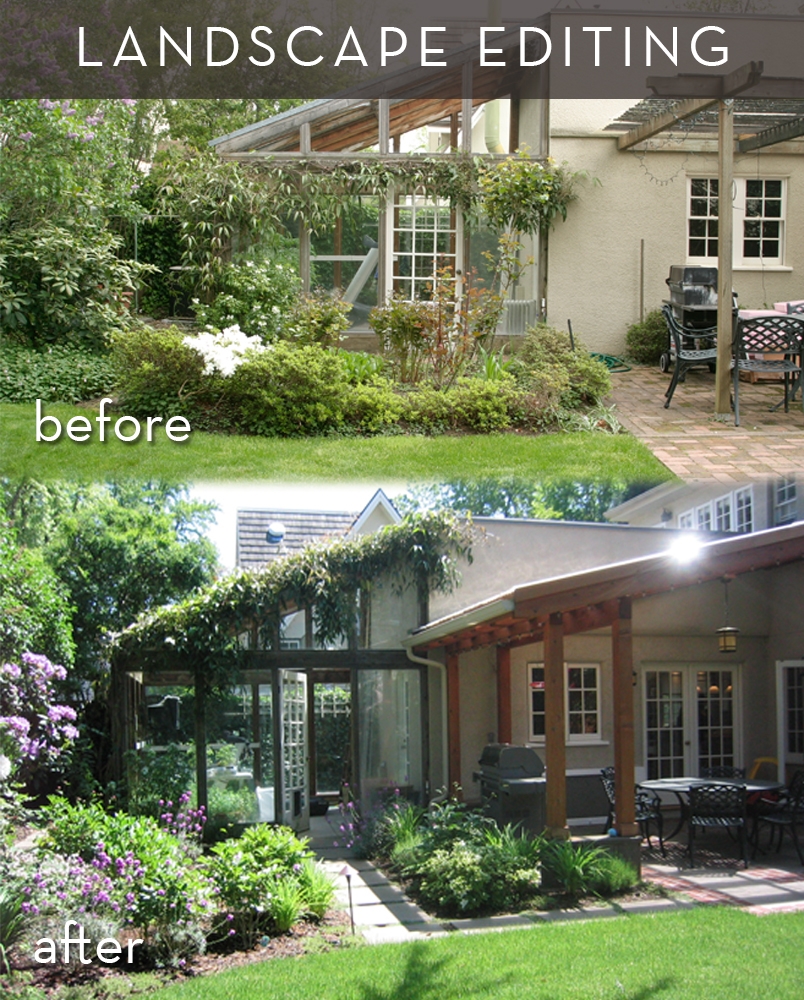
What do you do with a mature landscape that is past its prime? There is always the option of tearing everything out and starting from scratch, but that may not be the best option. Think of the features of an established garden that can only be accomplished through time and patience. Soaring, mature trees provide cooling summer shade. The soil microflora and fauna are optimally balanced to support preferred shrubs and perennials. While it may be difficult to edit an existing landscape, you will be able to leverage the advantages of a mature garden to achieve superior results.
How do you know when it is time to edit an aging landscape? It is the right time when you feel that maintenance of your garden has become too demanding, you’ve outgrown former aesthetic decisions, or your lifestyle is changing and you want your garden to reflect the shift of your priorities. The clearest sign is that many of the landscape elements feel tired, overly stressed or just plain kaput.
Take a look at your landscape and identify what elements are working in your favor. Your garden may have a great framework of evergreen shrubs, beautiful deciduous azaleas that burst into color every spring, or a stunning Japanese maple that is the envy of your neighbors. Earmark these elements for preservation or enhancement. Even if some trees or shrubs seem overgrown, professional pruning can transform plants that feel out of scale. Keep in mind that you can successively transplant healthy plants to different areas (read more on transplanting here.)
If you have been living in your mature landscape for some time, then you are already intimately familiar with your garden. You know the special places, where you like to sit quietly, which areas attract gatherings of friends and family, and so on. In essence you know how you like to live in your garden. But sometimes it is that very familiarity that keeps you from recognizing how your landscape is fighting against the way you truly want to live. Emotional attachments to plants that have outlived their natural lives hold you back from making necessary changes. You may need an outside eye to evaluate your landscape with an unbiased point of view. To successfully edit your garden, it is critical to identify both the positive and problem areas. This is how we guide our clients through the editing process.
Even without a complete rebuild, it is still possible to rethink the overall organization of landscape spaces. Try to break away from “how it’s always been.” Examination with a critical eye may reveal alternative design solutions – and that is what we do best.